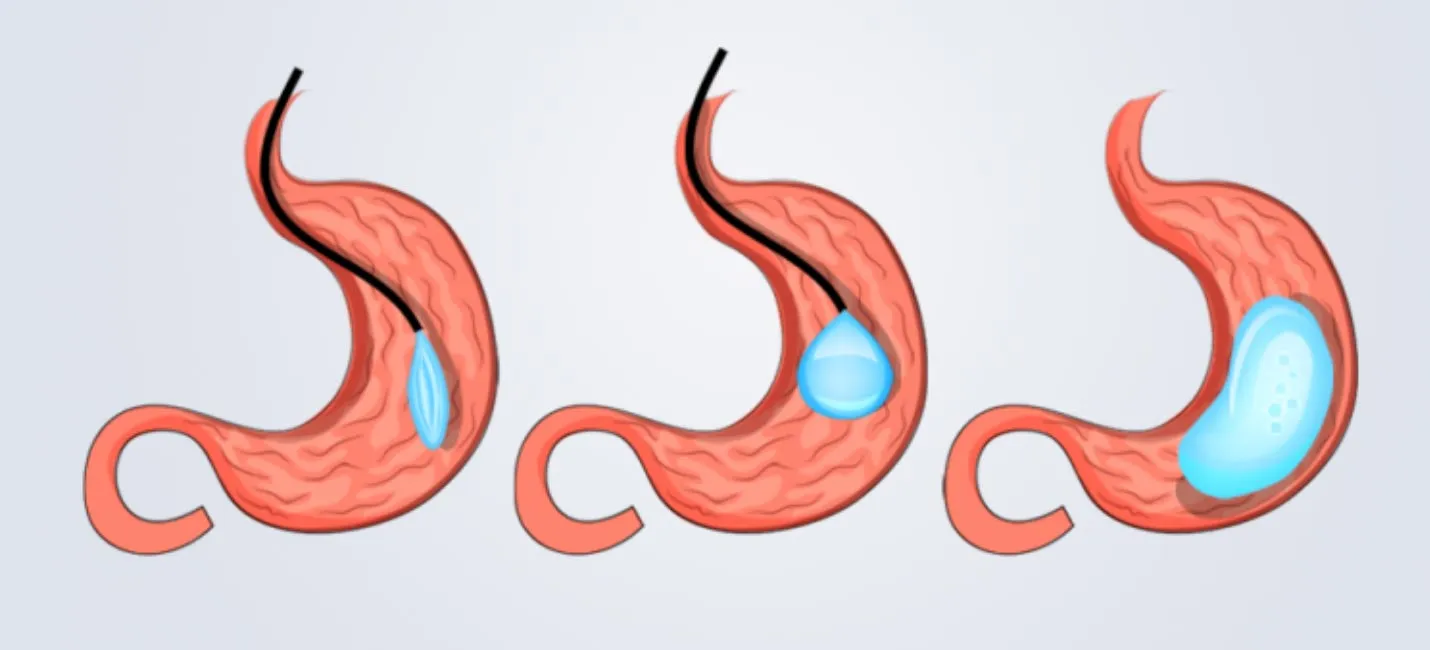Achieving sustainable weight loss presents a significant challenge for many individuals. While traditional methods like diet and exercise are fundamental, some require additional support to reach their health goals. The landscape of non-surgical weight management solutions has expanded, offering promising alternatives. Among these, the Orbera intragastric balloon system has emerged as a clinically recognized option. This system is designed to provide a sense of fullness, thereby facilitating reduced food intake. Clinical trials and real-world data consistently demonstrate its efficacy as an adjunct to lifestyle modifications. Understanding the typical weight loss outcomes associated with Orbera is crucial for informed decision-making. These outcomes are not merely anecdotal; they are supported by empirical evidence. The average weight loss achieved with Orbera typically ranges from 10% to 15% of total body weight. This significant reduction can lead to tangible improvements in overall health markers.
Table of Contents
What Kind of Weight Loss Results Can You Expect with Orbera?
Clinical data demonstrates that Orbera gastric balloon delivers measurable weight reduction outcomes during the standard six-month treatment period. The following table presents documented weight loss results from both clinical trials and real-world patient experiences:
| Weight Loss Metric | Clinical Trial Results | Real-World Patient Data |
|---|---|---|
| Average Total Body Weight Loss | 10.2 kg (22.5 lbs) | 8.4-12.1 kg (18.5-26.7 lbs) |
| Percentage of Excess Weight Lost | 37.2% | 32-42% |
| Average BMI Reduction | 3.7 points | 3.1-4.2 points |
| Patients Achieving >10% Weight Loss | 67% | 61-73% |
The Orbera average weight loss significantly exceeds outcomes achieved through diet and exercise interventions alone. Research comparing orbera vs diet and exercise shows that traditional lifestyle modifications typically result in 3-5% total body weight reduction over six months, while the gastric balloon average weight loss reaches approximately 10-15% of initial body weight.
Expected weight loss with gastric balloon varies based on patient adherence to the comprehensive programme. How much weight can you lose with orbera depends largely on commitment to dietary modifications and behavioural changes during the treatment period. Most patients experience consistent weekly weight reduction of 0.5-1 kg throughout the balloon placement phase.
Orbera balloon results demonstrate that the intragastric device creates sustained satiety, enabling portion control and caloric restriction. The orbera total body weight loss typically becomes evident within the first month, with peak weight reduction occurring between months three and five of treatment.
Documentation from multiple centres shows that patients achieving optimal results combine the balloon intervention with structured nutritional counselling and regular physical activity. These comprehensive orbera gastric balloon weight loss programmes produce the most substantial and sustainable outcomes during the six-month treatment window. Gastric Balloon Success Rates are evident when analyzing orbera average weight loss figures, as patients often experience significant reductions in body weight. This approach not only helps in achieving immediate weight loss goals but also instills lasting healthy habits.
How Long Does It Take to See Results with Orbera?
The timeline for Orbera weight loss results follows a predictable pattern based on extensive clinical data from bariatric programmes across the UK. Initial weight reduction typically begins within the first few weeks following balloon placement, with most patients experiencing their most significant losses during the initial three-month period.
| Timeline | Average Weight Loss | Key Milestones |
|---|---|---|
| 1 Month | 3-6 kg | Initial satiety adjustment, reduced portion sizes |
| 3 Months | 10-15 kg | Peak weight loss velocity, established eating patterns |
| 6 Months | 15-25 kg | Maximum weight reduction, nutritional stabilisation |
The gastric balloon creates immediate satiety enhancement, leading to rapid dietary modifications within the first month. Patients typically report feeling full after consuming significantly smaller portions, resulting in an average loss of 3-6 kg during this initial period.
The three-month mark represents the period of maximum weight loss velocity. During this phase, the intragastric balloon’s presence becomes fully integrated into daily eating habits. Clinical observations indicate that patients achieve approximately 60-70% of their total weight loss by this point.
Key milestones throughout the treatment period include:
- Immediate appetite suppression following balloon insertion
- Sustained caloric restriction leading to consistent weight reduction
- Progressive improvement in obesity-related comorbidities
- Enhanced portion control becoming habitual behaviour
The six-month endpoint typically yields the maximum therapeutic benefit, with total body weight reduction ranging from 10-15% of initial weight. The gastric distension created by the balloon maintains consistent appetite regulation throughout the entire treatment duration, ensuring sustained weight management outcomes.
Factors That Influence Orbera Weight Loss Success
Several critical variables determine the effectiveness of Orbera gastric balloon treatment, with patient adherence and lifestyle modifications serving as primary determinants of clinical outcomes.
- Dietary compliance represents the most significant factor affecting weight reduction with intragastric balloon therapy
- Exercise participation directly correlates with enhanced metabolic outcomes and sustained weight management
- Psychological readiness influences patient adaptation to dietary restrictions and behavioural changes
- Medical supervision frequency impacts treatment adherence and complication prevention
- Pre-existing metabolic conditions such as insulin resistance affect the rate of weight reduction
- Age demographics influence metabolic response rates and overall treatment efficacy
Nutritional counselling participation significantly enhances bariatric outcomes through structured meal planning and portion control education. Patients who engage with registered dietitians demonstrate superior weight loss percentages compared to those relying solely on device placement. Our clinical experience indicates that comprehensive nutritional support reduces early satiety complications whilst optimising micronutrient absorption.
Physical activity implementation proves essential for maximising intragastric balloon effectiveness. Cardiovascular exercise routines initiated within the first month post-placement correlate with improved body composition changes. Resistance training programmes particularly benefit patients by preserving lean muscle mass during rapid weight reduction phases.
Psychological support systems substantially influence treatment adherence rates. Patients participating in behavioural therapy sessions exhibit enhanced coping mechanisms for food cravings and emotional eating patterns. Support groups provide peer accountability mechanisms that strengthen commitment to lifestyle modifications.
Medical monitoring frequency affects complication detection and intervention timing. Monthly follow-up appointments enable healthcare providers to address gastrointestinal symptoms promptly whilst adjusting dietary protocols. Regular assessment of nutritional biomarkers prevents deficiency states that commonly occur during restrictive weight loss phases.
Patient selection criteria significantly impact procedural success rates. Individuals with BMI ranges between 30-40 kg/m² typically demonstrate optimal responses to intragastric balloon placement. Concurrent treatment of metabolic disorders enhances overall therapeutic outcomes through improved insulin sensitivity and hormonal regulation.
Orbera vs. Other Weight Loss Balloons: Comparative Results
Intragastric balloon procedures offer non-surgical weight management solutions, with multiple devices available in today’s bariatric market. Each balloon system presents distinct characteristics regarding placement methodology, duration of treatment, and clinical outcomes.
Orbera vs. Spatz
The following comparison demonstrates key differences between these balloon systems:
| Feature | Orbera | Spatz |
|---|---|---|
| Procedure Method | Endoscopic placement | Endoscopic placement with adjustability |
| Treatment Duration | 6 months | 12 months |
| Balloon Volume | 400-700ml | 400-800ml adjustable |
Key distinctions between these systems include:
- Spatz features adjustable volume capability during treatment period
- Orbera utilizes established single-fill methodology
- Spatz offers extended treatment duration compared to Orbera’s standard protocol
Orbera vs. Obalon
Comparative analysis reveals significant procedural differences:
| Aspect | Orbera | Obalon |
|---|---|---|
| Insertion Method | Single endoscopic procedure | Three capsule swallowing sessions |
| Treatment Length | 6 months | 6 months |
| Balloon Configuration | Single saline-filled balloon | Three gas-filled balloons |
Primary distinctions encompass:
- Obalon requires no initial sedation for capsule placement
- Orbera provides single balloon with higher volume capacity
- Obalon necessitates endoscopic removal for all three balloons
Orbera vs. Elipse
Procedural comparison highlights technological differences:
| Parameter | Orbera | Elipse |
|---|---|---|
| Insertion Process | Endoscopic placement | Capsule swallowing |
| Removal Method | Endoscopic extraction | Self-elimination |
| Duration | 6 months | 4 months |
Comparative findings demonstrate:
- Elipse eliminates need for removal procedures
- Orbera requires medical supervision for extraction
- Elipse offers shorter treatment duration with automatic deflation
Cost Comparison: Turkey vs. UK
Treatment costs vary significantly between countries:
| Procedure | Turkey | UK |
|---|---|---|
| Orbera | £2,500-£3,500 | £4,500-£6,000 |
| Spatz | £3,000-£4,000 | £5,500-£7,500 |
| Elipse | £2,200-£3,200 | £4,000-£5,500 |
These surgical tourism options provide substantial cost savings while maintaining international quality standards through accredited facilities.
Maintaining Weight Loss After Orbera Removal
Successful weight maintenance after intragastric balloon removal requires implementing structured lifestyle modifications during the critical six-month transition period. Clinical data demonstrates that patients who establish consistent behavioral patterns immediately following device extraction achieve superior long-term outcomes.
Dietary adherence remains the cornerstone of sustained weight management. Healthcare professionals recommend maintaining the reduced portion sizes practiced during balloon placement, utilizing smaller plates and implementing mindful eating techniques. Protein intake should constitute 25-30% of daily calories to preserve lean muscle mass and promote satiety. Regular meal timing prevents metabolic fluctuations that trigger weight regain.
- Consume balanced meals every 3-4 hours to maintain metabolic stability
- Prioritize lean proteins, complex carbohydrates, and nutrient-dense vegetables
- Eliminate liquid calories from sugary beverages and alcohol
- Practice portion control using measuring tools and food diaries
- Maintain adequate hydration with 2-3 liters of water daily
Physical activity progression becomes essential as gastric capacity normalizes. Evidence indicates that 150 minutes of moderate-intensity exercise weekly significantly improves weight maintenance outcomes. Resistance training twice weekly preserves muscle mass during the metabolic adaptation phase.
- Establish consistent workout schedules with both cardiovascular and strength components
- Increase daily steps to minimum 8,000-10,000 through lifestyle modifications
- Incorporate high-intensity interval training for enhanced metabolic benefits
- Monitor progress through body composition analysis rather than scale weight alone
Behavioral modification strategies address the psychological aspects of weight maintenance. Regular follow-up appointments with bariatric dietitians provide accountability and professional guidance. Support group participation and stress management techniques reinforce positive lifestyle changes, ensuring sustained weight loss beyond the initial intervention period.

